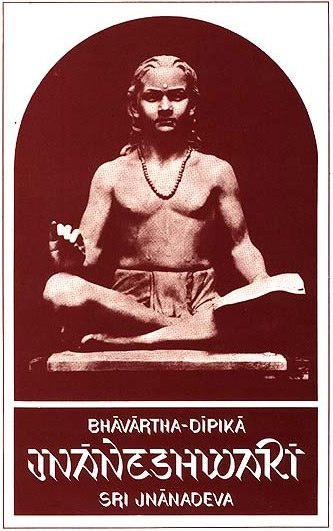Jnaneshwari (Bhavartha Dipika)
by Ramchandra Keshav Bhagwat | 1954 | 284,137 words | ISBN-10: 8185208123 | ISBN-13: 9788185208121
This is verse 13.19 of the Jnaneshwari (Bhavartha-Dipika), the English translation of 13th-century Marathi commentary on the Bhagavad-Gita.—The Dnyaneshwari (Jnaneshwari) brings to light the deeper meaning of the Gita which represents the essence of the Vedic Religion. This is verse 19 of the chapter called Kshetra and Kshetrajna Yoga.
Verse 13.19
Verse 13.19: “The Prakriti (Primal Nature) and the Purusha (person): understand them both as being without a beginning. The Modifications and Constituent-aspects: understand them as born of the Primal Nature. (960)
Commentary called Jnaneshwari by Jnaneshwar:
So, Purusha is beginningless, and closely attached to him is Prakriti; both these pass on together like day and night. The form (of anything) is not unreal. Yet it is accompanied by the shadow; or in the ear of com there grows also the husk along with the grain; in that way both Purusha and Prakriti are like (Siamese) twins, and they are (in existence) from times immemorial. Similarly everything that is stated under the category of Kshetra is all this Prakriti, and what is called Kshetrajna is this Purusha, and this need not be told separately. Although they have got different names, yet the principle underlying them is one and the same, and this aspect should not be lost sight of, I tell you again and again. The sole entity therein is Purusha, Oh Son of Pandu, and the totality of actions is Prakriti. The intellect, the senses, the heart—all these attributes and the three Gunas (constituent-aspects) such as Satva and others—the whole of this group is created from Prakriti, who is the source of all activism.
